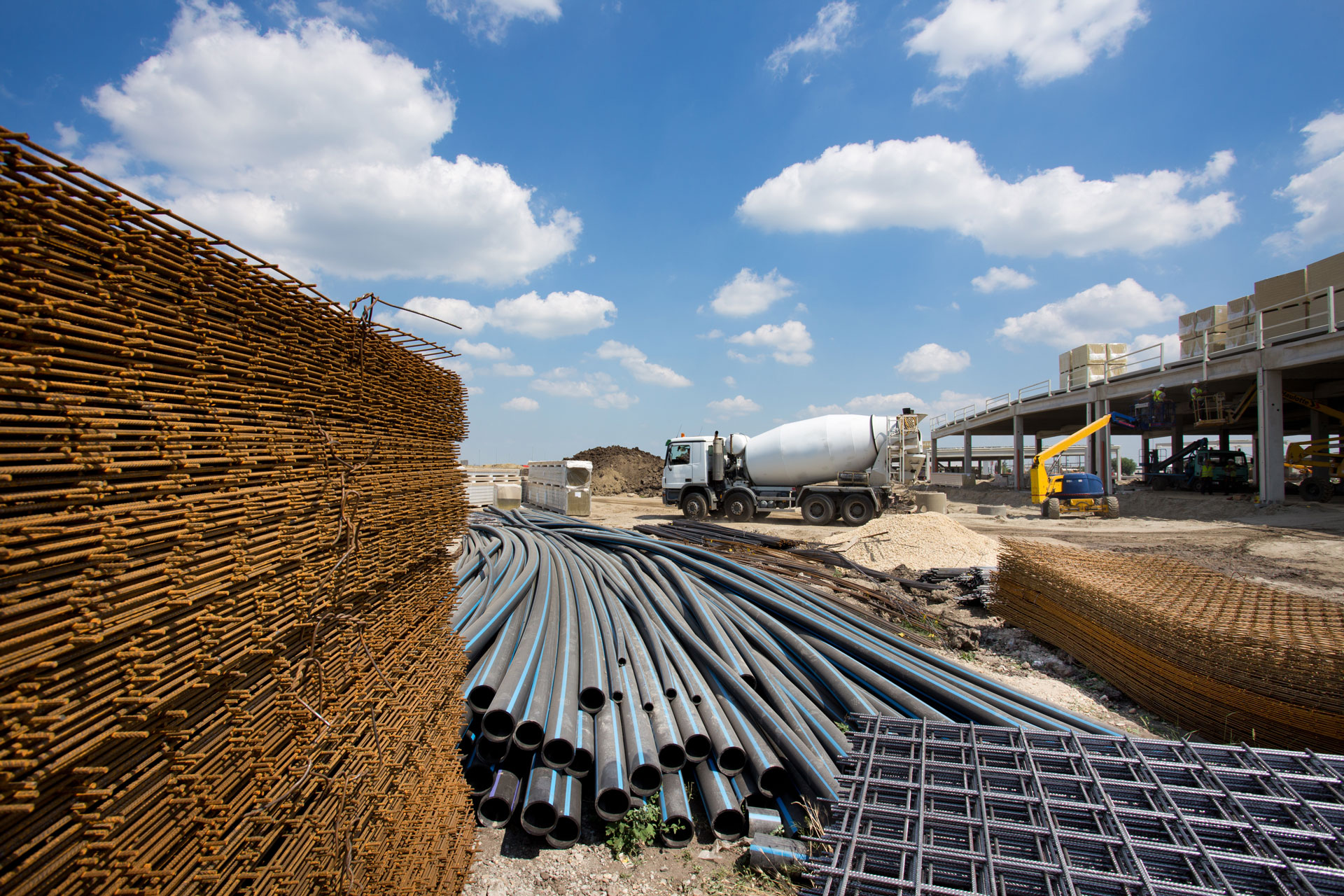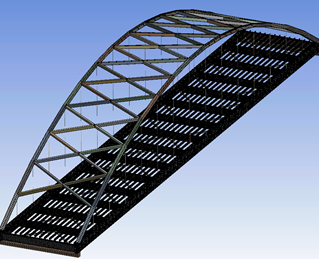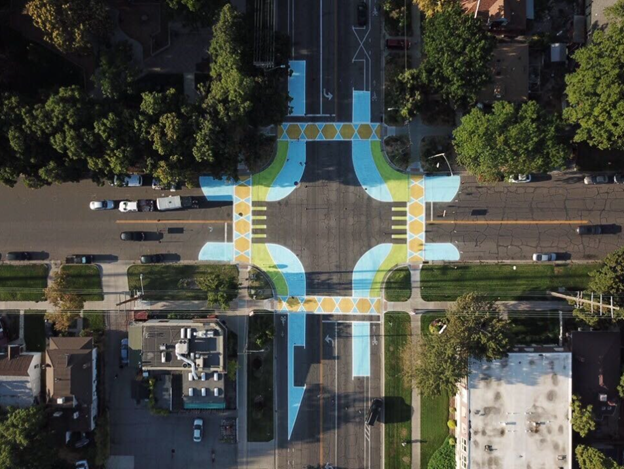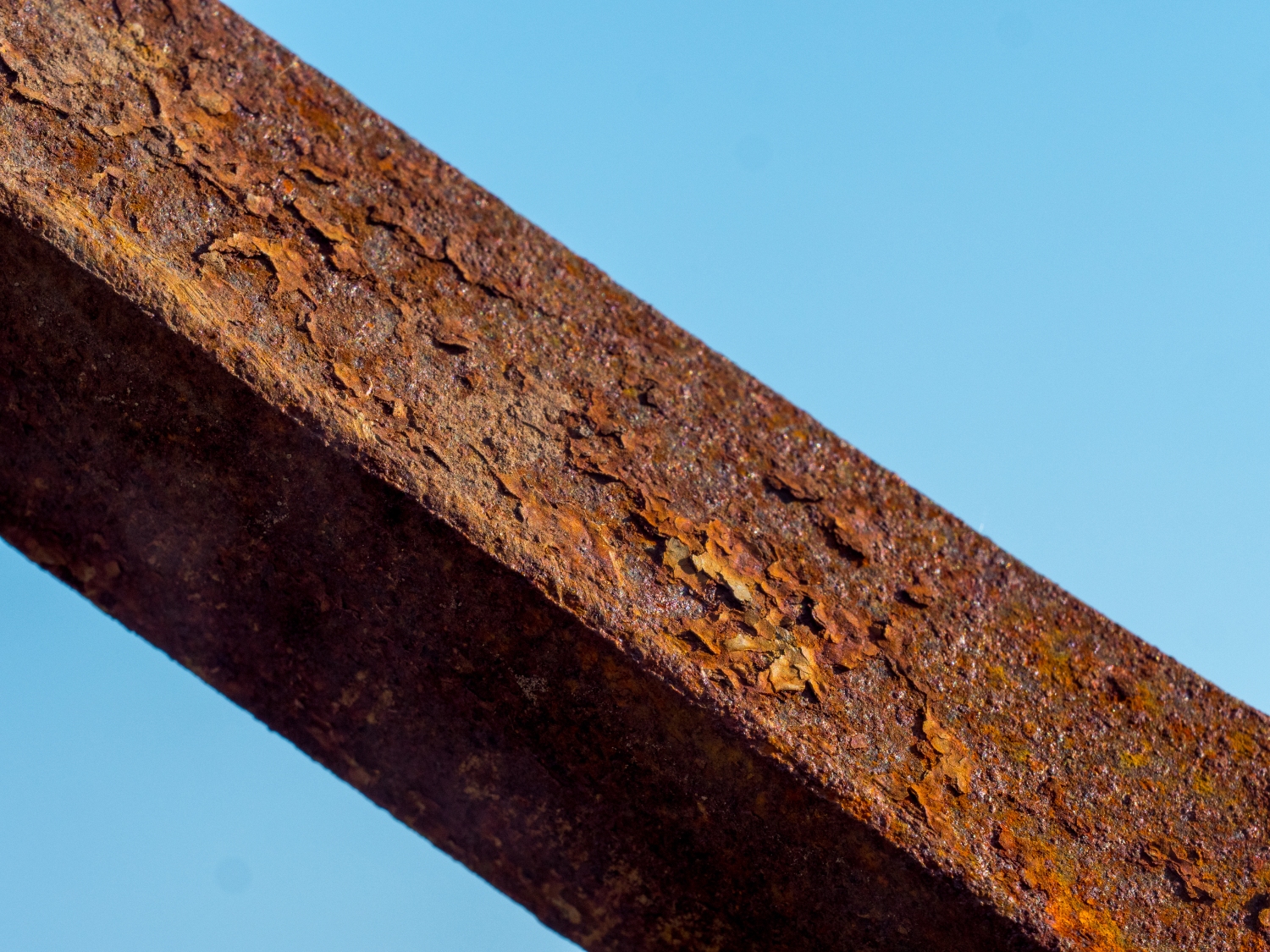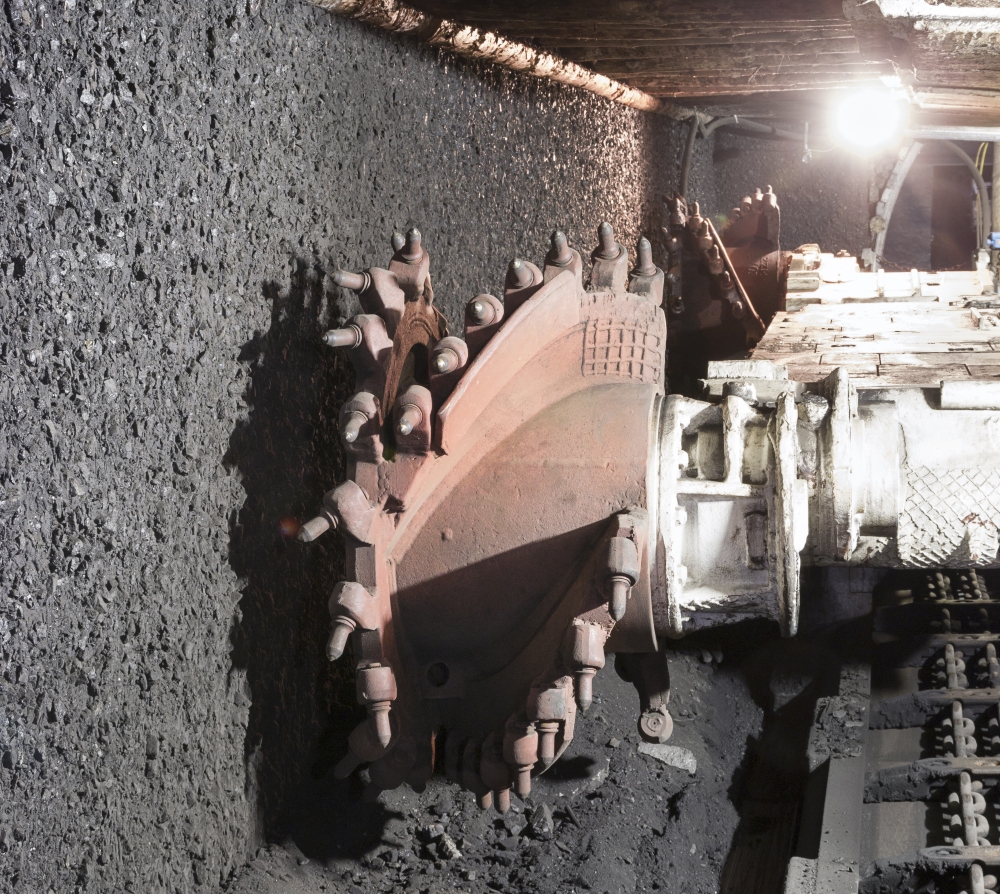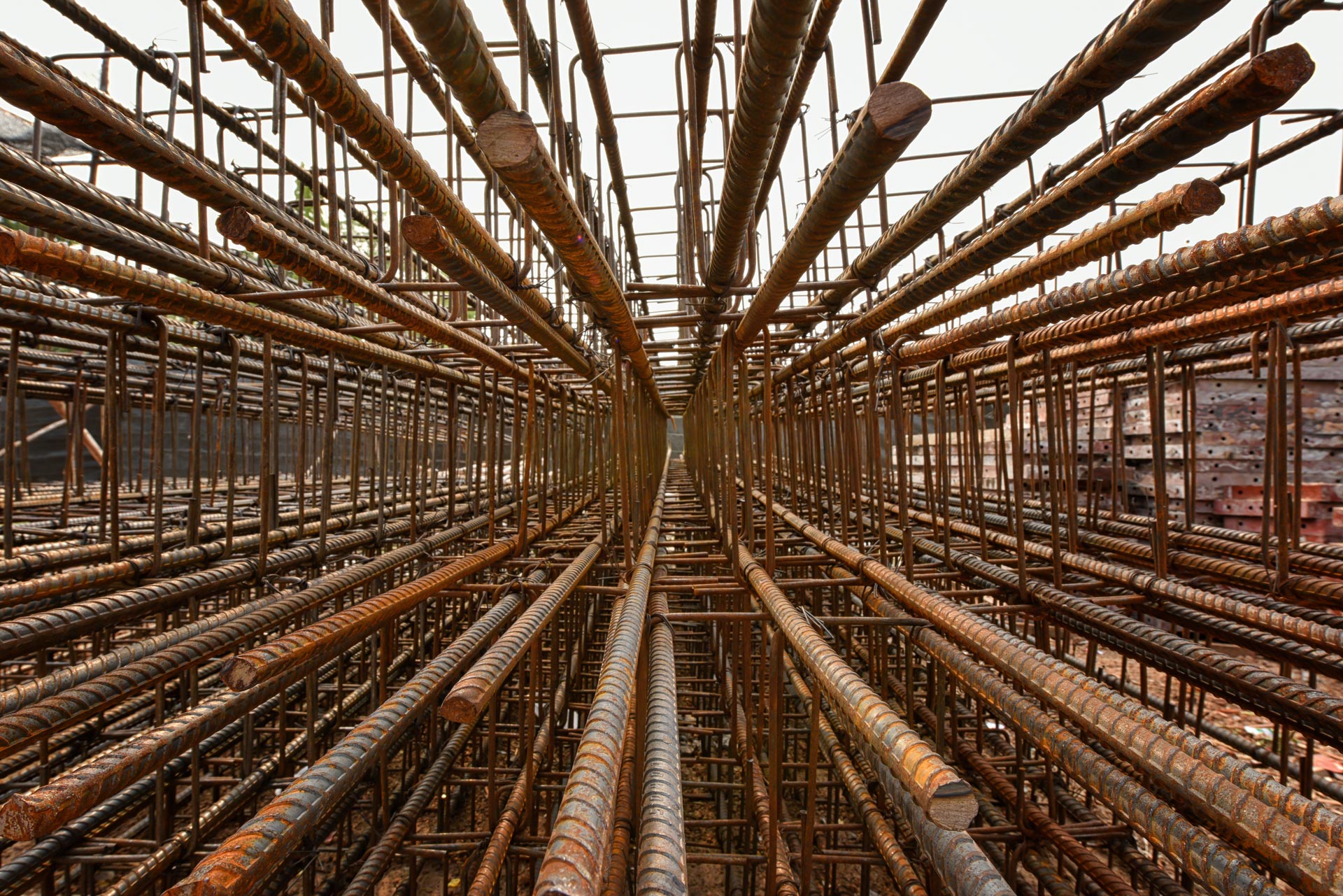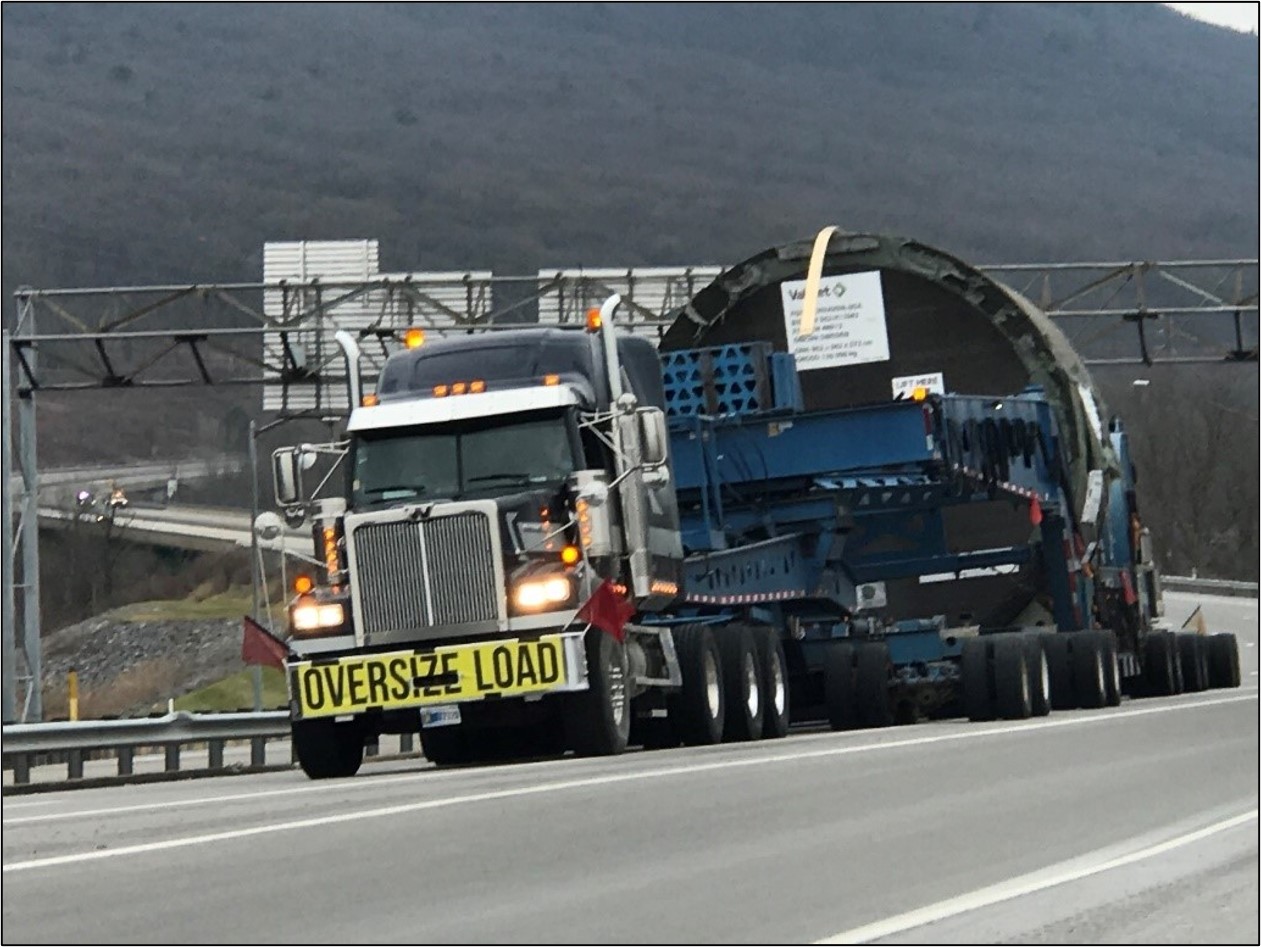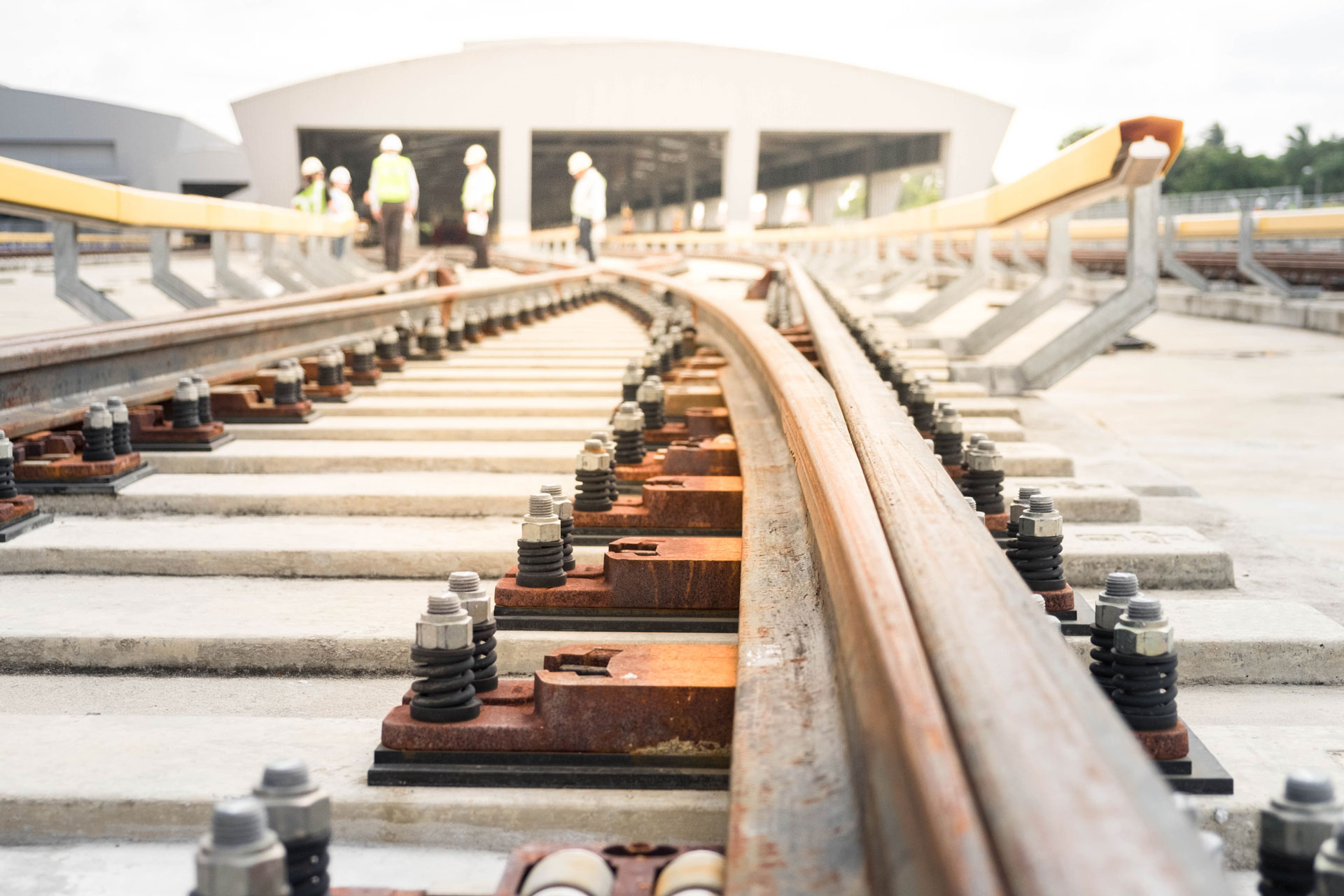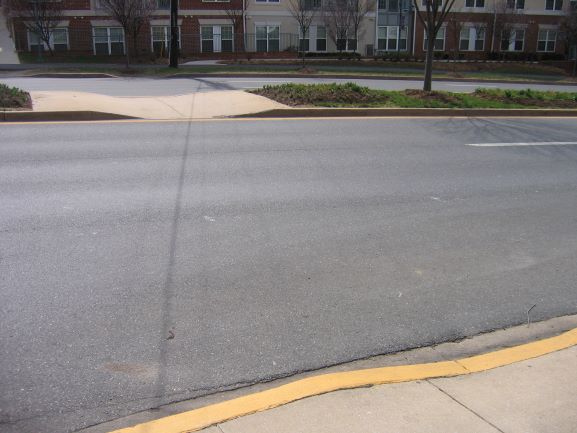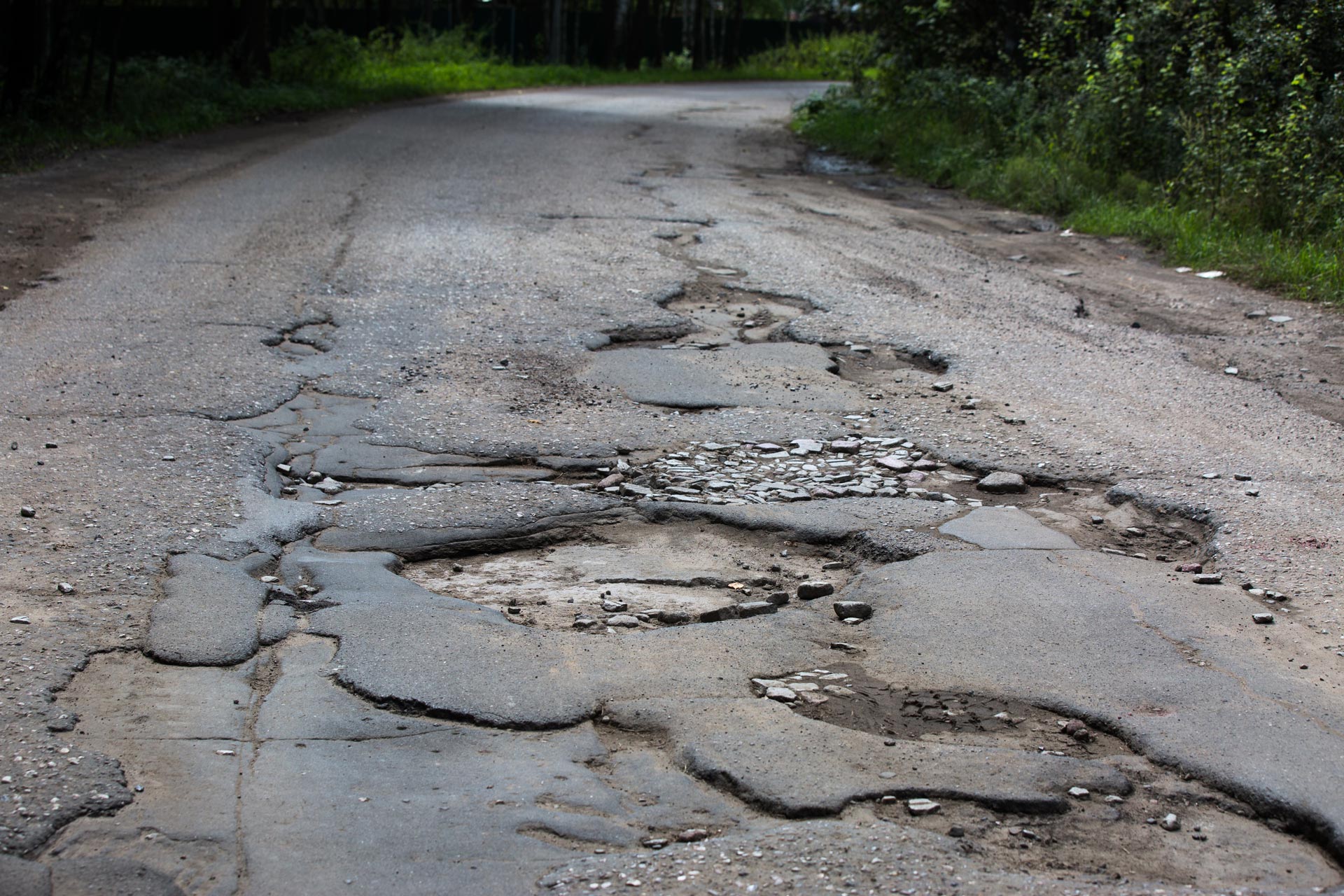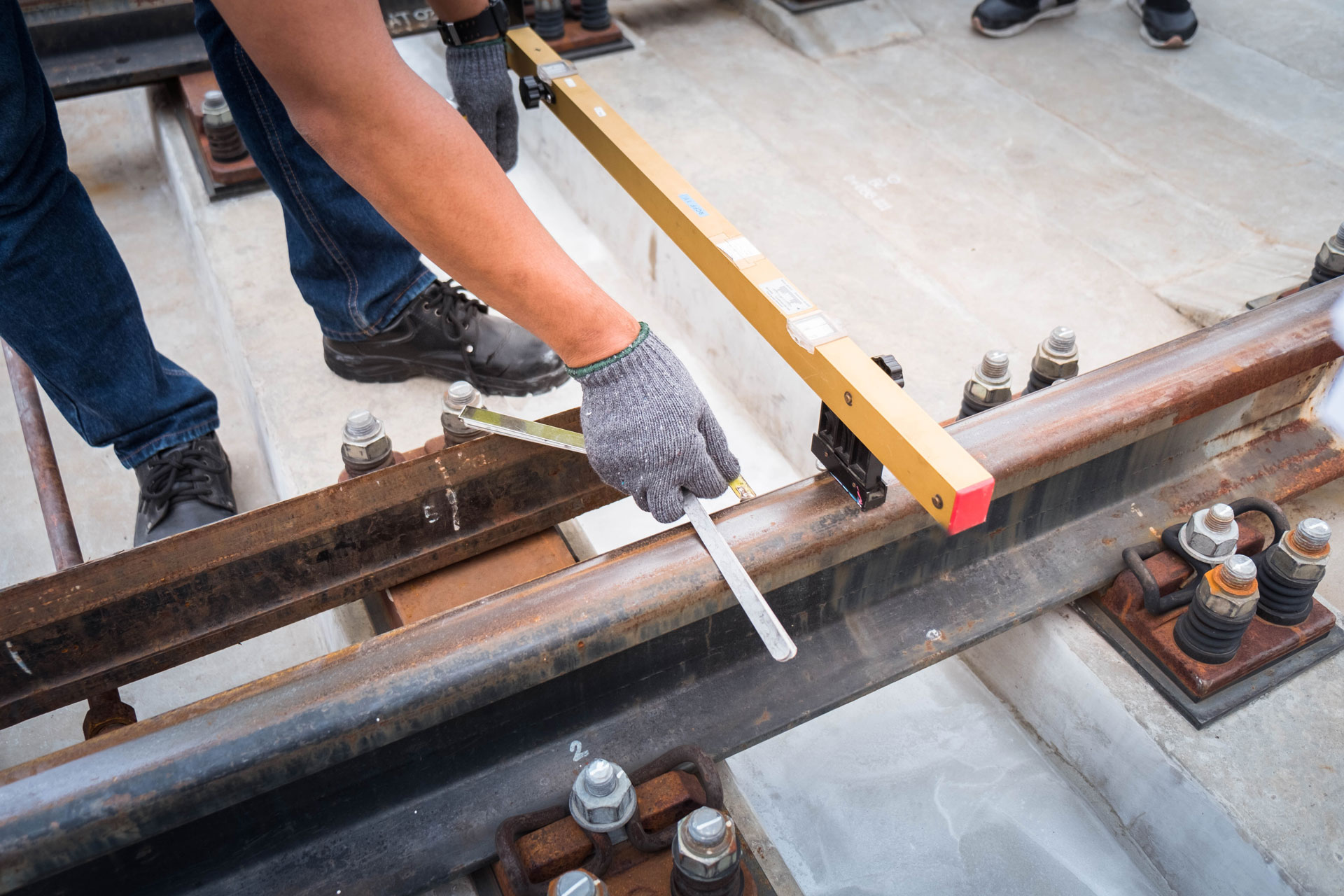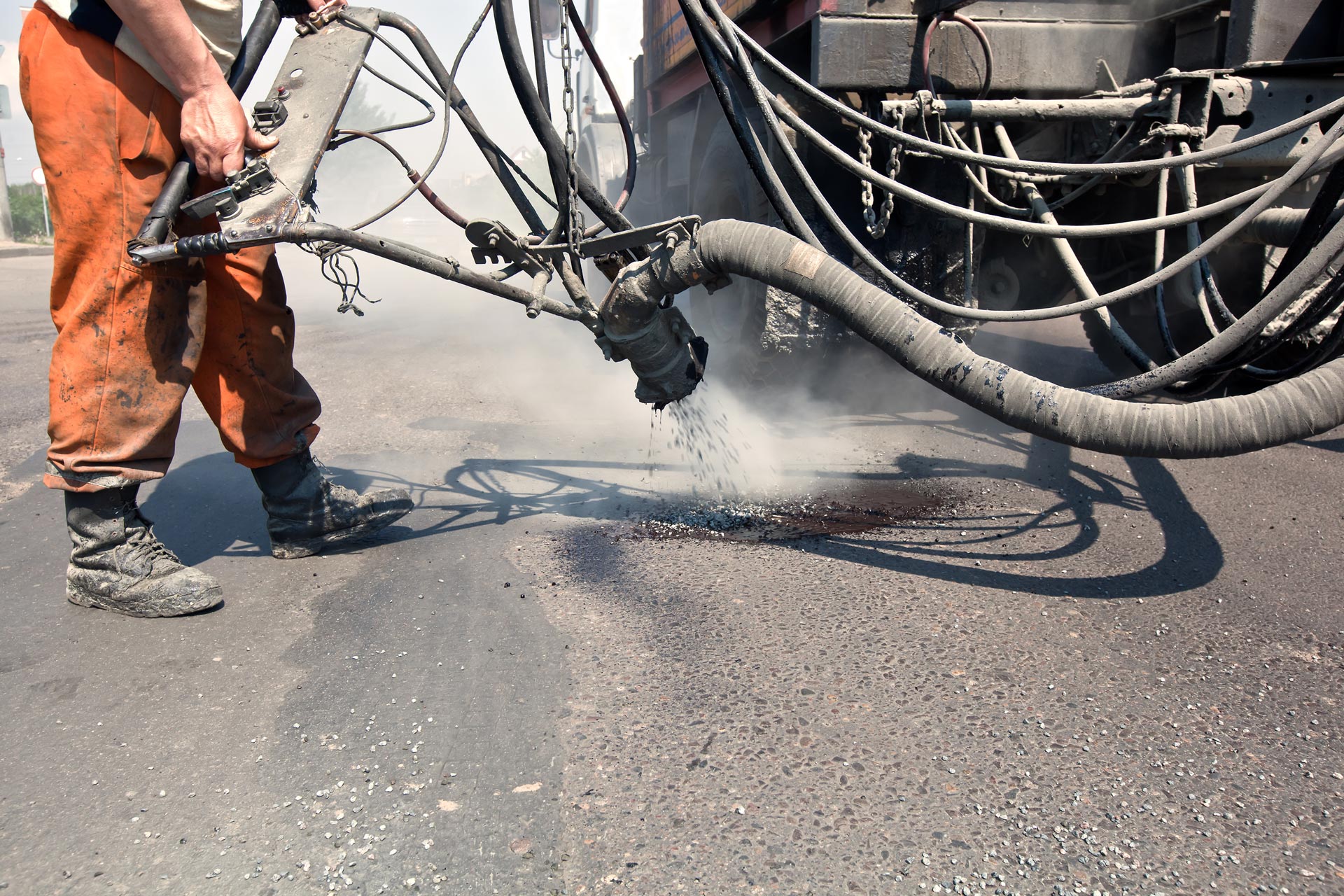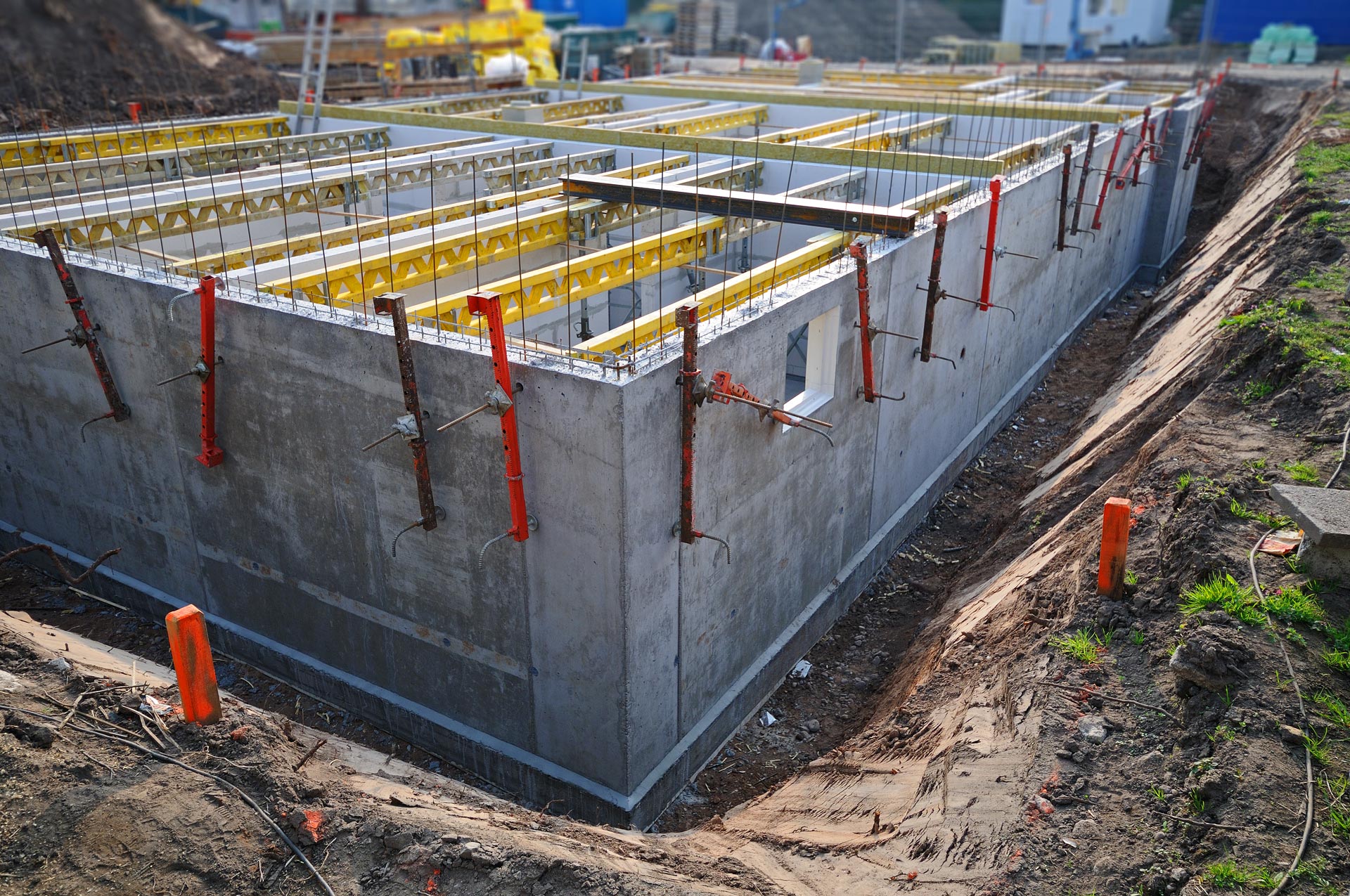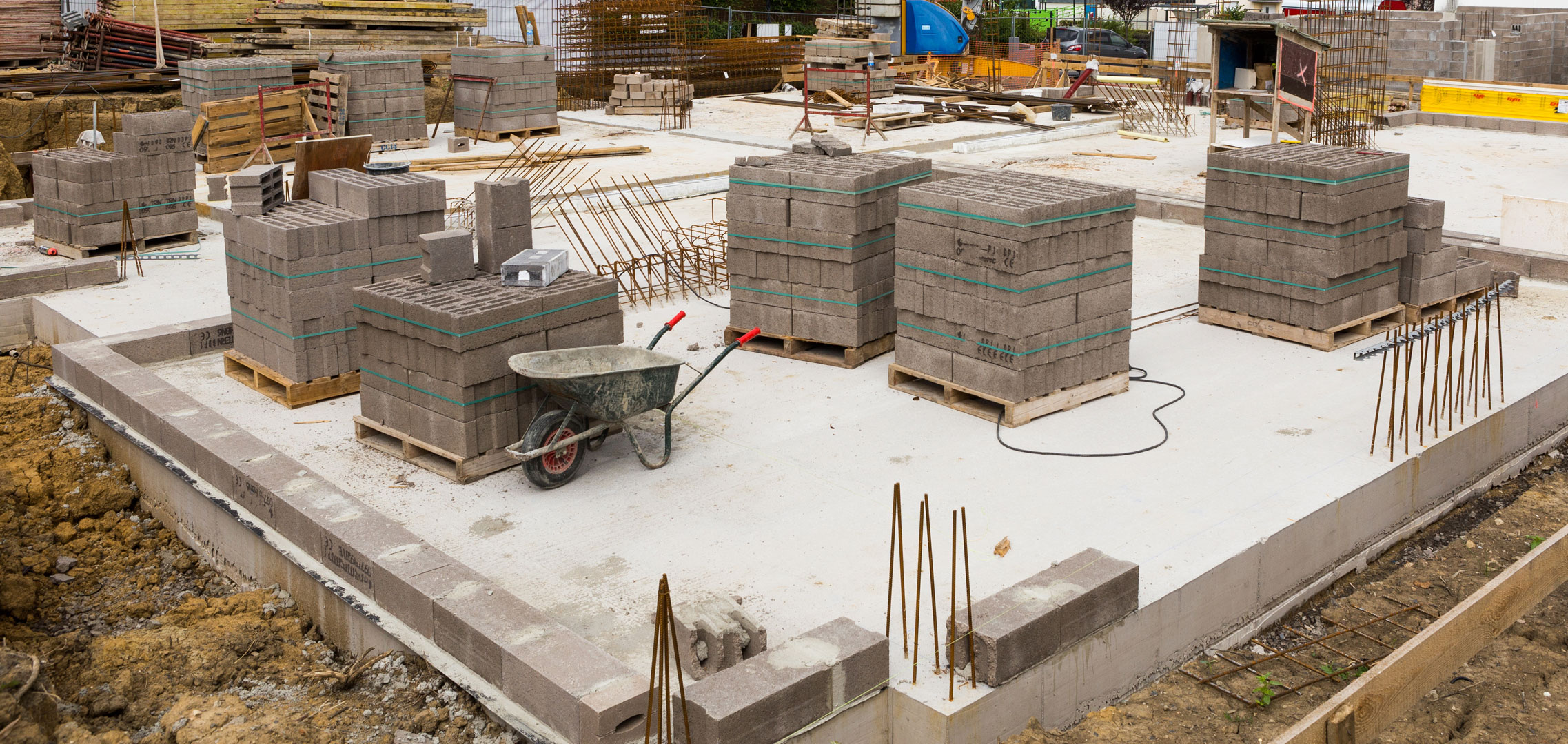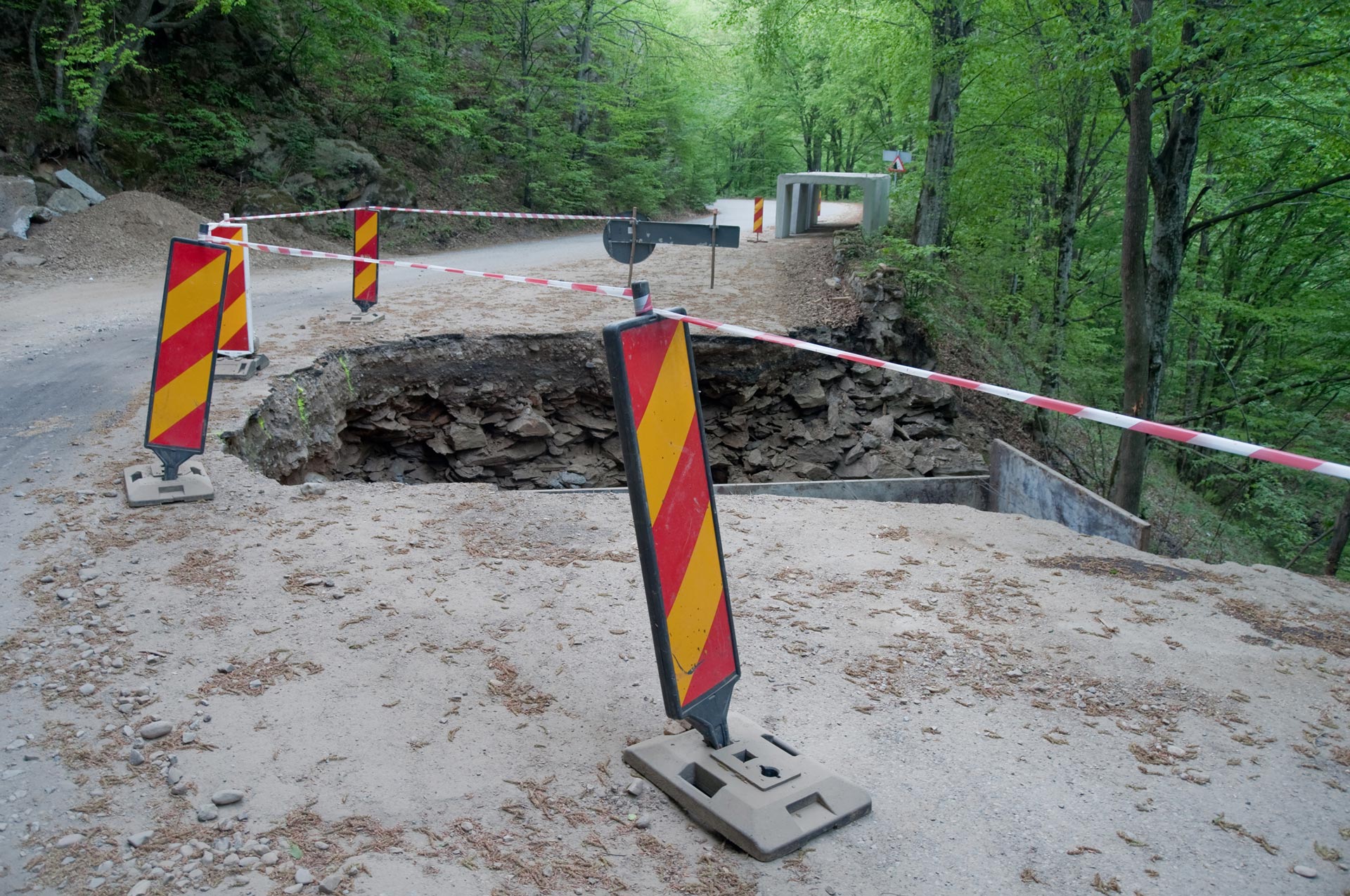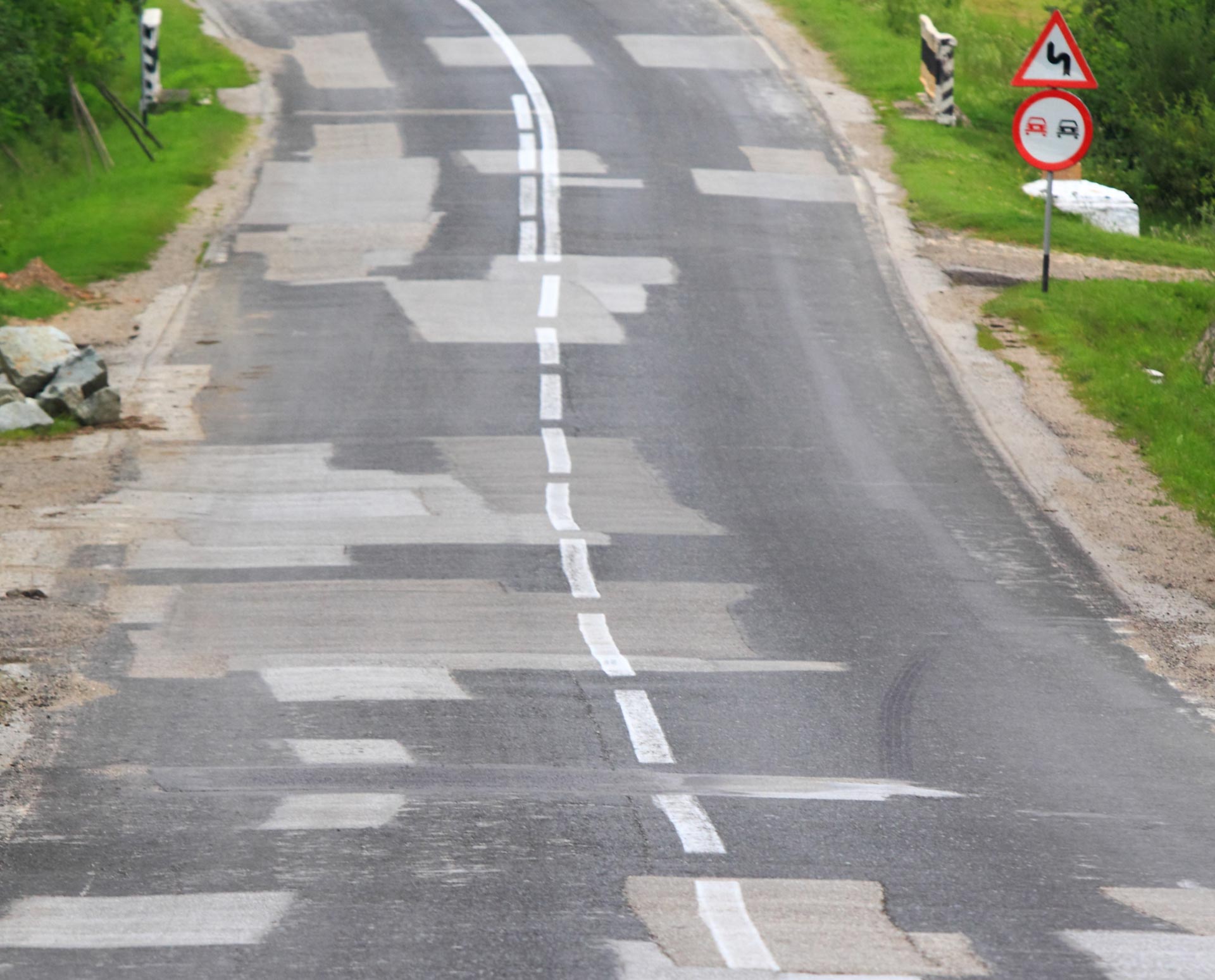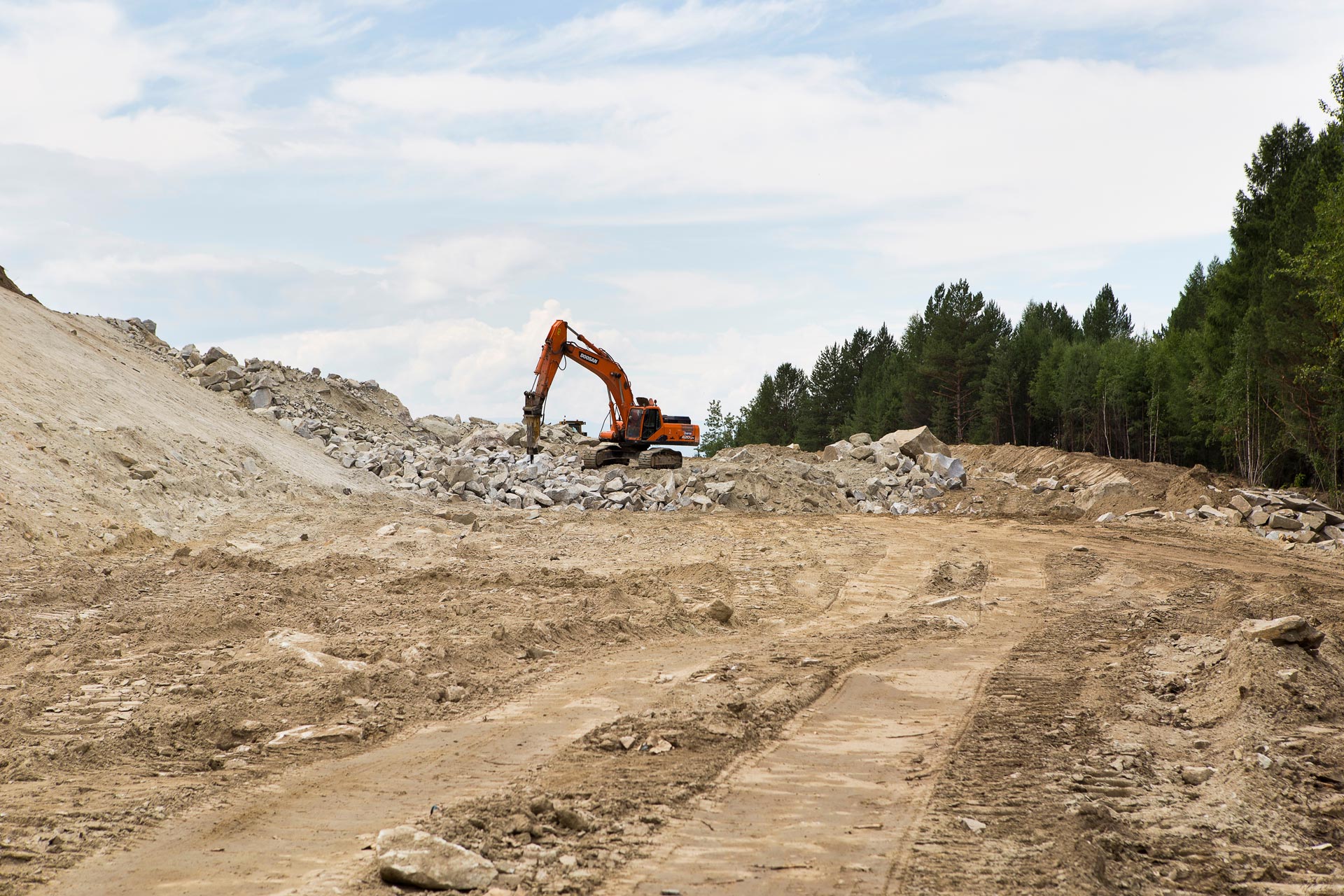Research Expertise and Capabilities
Developing Ideas
New Product Evaluations and Pavement Analysis and Modeling
Design
Geotechnical and Pavements
Forensic Studies
Facilities
Environmental Engineering and Water Resources
Materials and Construction
Sustainability and Green Design
Traffic and Transportation Engineering
Completed Projects
Corrosion Repair Strategies for Steel Girder Ends Using High Performance and Traditional Materials
This project investigated practical repair methods using high performance and traditional materials which can be applied to corroded and/or damaged steel girder ends in their in-situ state. Observed corrosion damage follows well known patterns: beam end corrosion is associated with leaking expansion joints and is most prevalent at bottom flange-to-web interfaces where debris accumulates, trapping moisture. The current state of practice for structural repair of beam ends is the complete replacement of the affected region. For localized damage, bolted or welded steel patches and/or doubler plates are used. An experimental study involving static tests of corrosion-damaged beam ends to failure is reported. End A tests were conducted without conditioning and End B tests were conducted following one million cycles of fatigue conditioning. Two control (undamaged Girder 1A and corrosion damaged Girder 2A) and four repair techniques (Girders 3-6) were tested: conventional bolted steel repair; ultra-high performance concrete (UHPC) encasement; normal strength reinforced concrete (RC) encasement; and adhesively bonded glass fiber reinforced polymer (GFRP) plates, respectively. All methods but GFRP performed well, restoring the undamaged strength and stiffness of the steel girder regardless of fatigue conditioning. GFRP repairs were unsuccessful. An extensive finite element modeling campaign was conducted and validated based on the experimental program. The modeling of the test specimens proved to be robust and captured observed behavior well. Recommendation for appropriate means of repairing corrosion damaged beam ends are provided.
Identification of Factors Controlling the Development of Subsidence Impacts Forecasting Methodology to the I-70 Alignment over Longwall Mining of the Tunnel Ridge Mine, Washington County, Pennsylvania
In the winter of 2019, the Tunnel Ridge Mine extracted a longwall panel under I-70 in Washington County, PA. Additional longwall panels under other portions of the highway are planned in the future. The extraction of these panels can produce a subsidence basin with maximum surface drops from 4 to more than 5-ft, the majority of which occurs within one or two months of undermining the roadway. This project investigates the influence of longwall mining on highway alignments and associated slopes and embankments, evaluates how the highway deforms during undermining with a focus on determining its transient characteristics, utilizes models to better understand subsidence impacts to the highway alignment, and where possible, determines how other future highway alignments could be impacted.
50 KSI Steel Piles
Background: The objective of this study is to re-evaluate the adoption, with the objective of potentially extending the utilization of Fy = 50 ksi for the structural capacity of steel H-piles (AISC HP sections) for bridge foundations. Specific consideration is given to the current capacity equations, Pn = 0.66AsFy and Pr = 0.33AsFy, with the objective of their confirmation or revision; potentially permitting fewer piles for a foundation and an associated cost savings.
Findings: The impacts of these revisions, including those upon foundation settlement, are evaluated and recommendations for the revision of DM-4 (as amended by SOL 483-14-04) are provided.
Results: Results indicate that the AASHTO permitted pile capacity of 0.5AsFy is not technically achievable without the reduction in required over strength permitted using a PDA. Even using a PDA, this capacity may only be achievable for smaller pile sections. The SOL 483-14-04 permitted pile capacity of 0.5(0.66)AsFy in which Fy = 50 ksi is achievable in cases considered although driving stress in large HP14x117 piles approaches the limit of 0.9AsFy. The theoretical increase in pile capacity realized by accounting for the increase of Fy from 36 to 50 ksi and the revisions to the PennDOT standard results in a theoretical increase in pile capacity of 131% by increasing Fy from 36 to 50 ksi; this increase is achievable for all cases considered. Driving piles to the maximum permitted driving stress of 0.90AsFy = 45 ksi, resulted in pile capacities ranging from 0.64AsFy to 0.76AsFy with smaller pile sections having marginally higher achievable capacities. Analysis of bearing pile settlement indicated that piles having Fy = 50 ksi and design capacities up to the AASHTO-specified capacity of 0.50AsFy will not exhibit settlements greater than approximately 1 in. at service loads.
Benchmark comparisons with available CAPWAP analyses confirmed the method of WEAP analysis to obtain a reasonably accurate driving analysis.
A representative cost analysis – normalized on the basis of 100,000 kips driven pile capacity and a number of fundamental assumptions concluded that increasing the design capacity of a pile results in a decrease in cost per driven pile capacity although due to the need for larger hammers and cranes, permitting design capacities greater than 16.5 ksi results in only marginal additional savings
Recommendations: It is recommended that the nominal compressive resistance of braced piles be calculated as Pn = FyAs (i.e., per AASHTO 2014 Eq. 6.9.4.1.1-1) and a value of φc be adopted that addresses the approach to bearing pile design in Pennsylvania practice. Adopting such a single φc factor approach would allow most of §6.15.2 and much of 6.15.3 to be deleted from DM-4 thereby better aligning DM-4 with AASHTO, simplifying design and mitigating opportunities for confusion and/or error.
Adopting the value ϕc = 0.33 for severe driving conditions is mathematically equivalent to the present SOL 483-14-04 provisions while allowing the noted clauses to be deleted. Limiting driving stress to 0.9Fy = 45 ksi as recommended by AASHTO and SOL 483-14-04 is believed to be appropriate.
Improved Performance of Jointed Plain Concrete Pavements (JPCP) Through a Better Awareness of Drying Shrinkage
Background: Long-term drying shrinkage and early-age plastic shrinkage cracking can affect the performance of jointed plain concrete pavements (JPCPs). The plastic shrinkage cracks develop while the concrete is still fresh. This occurs when the rate of evaporation of the moisture on the surface of the concrete exceeds the bleeding rate. While plastic shrinkage cracking affects the durability, long-term drying shrinkage affects the fatigue life. This study evaluates current Pennsylvania Department of Transportation specifications and practices pertaining to the paving mix design and construction, specifically finishing and curing, and their effects on long-term performance. This specification review was supplemented by a laboratory study to evaluate curing and mix design enhancements.
Findings: A review of the performance of in-service pavements revealed plastic shrinkage cracks commonly develop in JPCP constructed in Pennsylvania. The curing and finishing construction practices and specifications were reviewed to identify potential causes and it was found that improvements could be made to reduce the potential for plastic shrinkage cracking. These improvements address both the type of curing compound used as well as the method used for application. It was also found that excessive water added to the pavement surface during the burlap drag finishing is increasing the water-to-cement ratio at the surface, and thereby reducing the strength. This increases the potential for plastic shrinkage cracking as well. Finally, it was determined that the drying shrinkage could be decreased and the durability increased if the water-to-cement ratio was lowered and a more densely graded aggregate specified.
Results: The curing compound study performed revealed statistically significant differences between the different curing methods. The moisture loss was lower and the early-age concrete material properties, specifically compressive strength and permeability, were improved for specimens with the poly alpha methylstyrene resin cure. Additionally, the specification review and site visits revealed that PennDOT would benefit from removing the wet burlap drag from the finishing process unless it is being used to provide texture for the final finish. Currently any texture provided by the drag is being removed by the finishers working behind the drag and, at times, the process is used to add excessive moisture to the pavement surface. The mix design investigation revealed that both lowering the water-to-cement ratio and using a more densely-graded aggregate, as compared to current PennDOT paving mixes, will result in a lower cement demand and therefore less shrinkage. The mix would also be less susceptible to segregation and durability issues.
Recommendations: As a result of this study, the following recommendations have been made:
- PennDOT should require a curing compound with a poly alpha methylstyrene resin rather than the currently required wax-based compound.
- A denser aggregate gradation in the paving mix would reduce the cement demand and therefore reduce drying shrinkage and increase durability. The Shilstone methodology can be used for establishing this gradation.
- A target 0.40 water-to-cement ratio is recommended for paving mixes.
- The practice of pulling a soaked burlap drag immediately behind the paving equipment but before the finishing practice should be eliminated. If used, the wet burlap drag should occur after finishing and only to add texture but without adding excessive water to the surface.
- The application of liquid membrane forming curing compounds should be done exclusively with mechanized equipment for mainline paving and no hand spraying should be allowed to avoid a nonuniform application.
Bridge Waterproofing Details
Background The objective of this research is to improve the safety margin and redundancy of current waterproofing details used for bridge substructures in PennDOT practice.
Findings: Based on literature review, field visits, inspection reports, structural analysis and experimental tests, the key components of the waterproofing system were studied. Their strength and robustness were analyzed and evaluated based on the damage development and failure modes.
Results: The inadequacy in the key components of current waterproofing system is assessed and remedies to mitigate water leakage are proposed for PennDOT practice
Recommendations: Based upon the evaluation on strength and redundancy, executable recommendations are proposed to strengthen the waterproofing details at critical locations. The proposed practice not only strengthens the waterproofing details, but also provides advantages in repair cost and inspection.
Evaluation of Bridge Cleaning Methods on Steel Structures
Background: Corrosion due to soluble salts is a major factor in the lifespan of the bridges and their protective coating. However, deicing salts are required to maintain the serviceability of the transportation infrastructure during winter months. Therefore, it is beneficial to develop a bridge washing program, which can remove soluble salts from steel bridge members. This study evaluated the Pennsylvania Department of Transportation (PennDOT) procedures for bridge washing.
Findings: It was found that using water without any cleaning agents is effective in removing soluble salt from steel bridges as long as good practices are followed while washing the bridge and the bridge coating is intact. Washing was found to be ineffective if the pressure used was significantly below the 1750 psi prescribed by PennDOT, the surface being washed showed significant evidence of coating failure and corrosion, or if the washer nozzle was too far below the target area for the pressure being used. From a programming stand point, it was found that members directly above a roadway contained high concentrations of soluble salts and are not currently required to be cleaned. On the other hand, the full length of the truss and arch members below the bridge deck are currently being cleaned and did not have large surface salt concentrations for the bridges evaluated. It was also determined that the wash water generated during the bridge washing process did not adversely affect the surrounding environment.
Results: The pre-wash soluble salt concentration ranged from 8mg/m2 (11x10-3 grains/ft2) on several areas that were not directly exposed to salt, and were rinsed by rain, to as high as 1133 mg/m2 (1624x10-3 grains/ft2). This was measured on the bottom flange of a diaphragm beam directly below a leaking expansion joint. The highest pre-wash surface salt concentration on an area not currently required to be washed under PennDOT specifications was 298 mg/m2 (427x10-3 grains/ft2). This location was on the top side of the bottom flange of a girder above a roadway. Washing efficiencies ranged from 95 percent when salt concentrations were high and the equipment was working properly to 0 percent (no statistically significant difference). The latter occurred when the equipment was not properly functioning and the water pressure was low. All heavy metal concentrations measured in the waste wash water were below the levels prescribed in the Pennsylvania Code, Chapter 93.
Recommendations: As the result of this study, the following recommendations have been made:
- The CMMT and PennDOT Publication 55 are not in agreement on the frequency in which bridges are to be washed and should be changed so that they are consistent.
- The area of a steel bridge directly beneath a leaky expansion joint should be washed frequently until a repair can be made. The joint itself should also be flushed to remove any residual salts, which typically accumulate in the joint.
- Overhead members extending horizontally across the roadway and within 7 m (23 feet) of roadway surface exhibited high salt concentrations and washing of these areas would appear to be beneficial.
- Locations in the vicinity of connections exhibited high salt concentrations and washing of these areas would appear to be beneficial.
- Washing was found to be ineffective for the bridges evaluated when a majority of the coating had failed.
- Pressurized water was sufficient to clean bridges when the surface is intact and therefore chemicals are not recommended for cleaning in these areas.
- A pressure gage should be installed and monitored on all equipment to ensure cleaning occurs at the prescribed pressure.
Remote Sensing of Bridge Scour Installation Testing Phase
Objective: Bridges over waterways such as streams and rivers have foundation structures that extend down into the stream or river beds. These structures are surrounded by alluvial soil and other materials that protect the bridge foundations. During flood events the stream flow velocities are such that there is a tendency for the alluvial soils to wash away. This process is termed scouring. PennDOT has been looking for a real time solution to detect this scouring without success over the last few years. During flooding, they can send a crew to check the bridges, but it is difficult to see below the surface of the water to determine if scouring has taken place to a level where the bridge needs to be closed. The objective is the development of a sensor and sensor system that can be used to produce a visual indication to an inspector in the vicinity of the bridge that scouring has taken place and possibly to what level. Through relatively straightforward communications channels, the system could be enhanced so that the reporting mechanism is directed to a central facility from numerous remote locations.
Biodiesel Fuel Feasibility Study
Objective:The objective of this work order is to advise PennDOT during their District 8 pilot fleet transition to biodiesel. The University will provide information and recommendations on best practices for current biodiesel (B5) implementation, and for other possibilities for biodiesel implementation including additional biodiesel formulations (eg., B20, B100 and the relationship between manufacturers’ recommendations and warranties). The University will also provide recommendations with respect to measures to be taken to meet 2010 federal emissions requirements. The analysis will include information on economic impacts and environmental impacts, along with evaluating performance, for the pilot study and statewide implications. Collaboration with other state agencies (i.e. DEP) is anticipated.
Deterioration of J Bar Reinforcement in Abutments and Piers
Objective: The objective of this project is to determine the extent and nature of deterioration and/or necking of J-bars in existing abutment, pier, and retaining wall footings so that the condition can be addressed using appropriate repair or rehabilitation methods.
Effects of Superloads on Pavement Life
Superloads (SLs) are a class of vehicles that typically exceed both gross vehicle weight limits and axle load limits, in addition to occupying two or more lanes of traffic. In Pennsylvania, SLs require special permits, however, the effects of these vehicles on pavement distresses have not been considered. The purpose of this study was to evaluate SLs typical to Pennsylvania and quantify the damage induced by single load applications of these vehicles on pavements. Laboratory and computational analyses were combined to evaluate fatigue cracking and dowel damage in concrete pavements and fatigue damage, rutting, and shear failure in asphalt concrete (AC) pavements. In concrete pavements, SLs were found to disproportionately increase fatigue damage particularly under conditions of high positive temperature gradients. Laboratory testing also indicated that this damage increases non-linearly. Therefore, damage accumulation is higher for pavements that are already significantly damaged than those that are still relatively undamaged. Additionally, the heavy loads increased the dowel looseness developed at transverse joints, which may lead to high faulting. However, the increase in looseness caused by a single SL application is minor, with a minimum of 1,000 SL passes required to increase measurable damage. Computational analysis found that damage accumulation increased when the slab experienced large positive temperature gradients, which frequently occur in late spring and summer. Untied shoulders and poor aggregate interlock are other factors that may cause an increase in looseness, and hence faulting. For flexible pavements, the fatigue damage, rutting, and potential for shear failure were particularly high when the AC and base layers were thin and relatively less stiff. However, as in the rigid pavements case, a single pass of a SL truck does not cause any appreciable damage to the flexible pavement. Predictive models for damage caused to flexible and rigid pavements were developed and implemented into Excel workbooks.
Depth to Bedrock Seismic Measuring Device
The purpose of this research is to evaluate the use of passive seismic methods to estimate the depth to bedrock. These seismic investigations are used to delineate different geologic conditions such as layer geometry, water table, and the bedrock topography. Civil engineers rely on accurate measurements and assessments of bedrock to build safe, stable structures. The goal of the project is to establish the accuracy and efficacy of these methods as compared to current and historic core boring taken by PennDOT, with the goal being to eliminate a portion of the core borings currently being performed by the Department. Fourteen sites across northwestern Pennsylvania were used to evaluate the results from 3 different methodologies to historical core borings with recommendations provided.
Developing a Methodology to Incorporate Transit, Pedestrian and Bicycle Design Features into Highway and Bridge Projects during the Planning and Design phases of Project Development in Pennsylvania
Background: The objective of this research was to develop a more qualitative means of assessing the need for bicycle, pedestrian, and transit facilities in conjunction with highway and bridge projects.
Findings: Data collection, latent demand, level of accommodation and the need for the accommodation of pedestrians, bicyclists and transit users in planning and designing highway and bridge projects was explored.
Results: The testing of three potential methodologies on four current highway and bridge projects explored how these methods could be adapted to Pennsylvania.
Recommendations: Based upon this evaluation, the researchers recommend consideration of a modified Georgia DOT method to replace the current bicycle and pedestrian checklist. The Georgia DOT method provides a more prescriptive methodology and incorporates crash criteria, specifically for pedestrians and bicycles.
Repair Method of Pre-stressed Girder Bridges
Objective: Since pre-stressed concrete bridges are showing signs of damage and distress, this research reviews current practices and repairs, recommends best practices in concert with PennDOT, and identifies candidate structures for future demonstration projects.
Phase 2 - Bridge Scour
Background: The objective of the research was to develop a production ready float-out device bridge scour monitoring system. Initially, float-out devices are buried around a bridge abutment at specific locations and depths. After a scour event, a float-out device is released and wirelessly communicates with a receiver, located near the bridge. The receiver produces a visual indication to an inspector in the vicinity of the bridge that a float-out device has been released at the specified location and depth.
Findings: After reviewing the Phase 1 prototype, multiple adjustments were required to the float-out device and radio frequency receiver. The float-out device has been modified to comply with durability and operational requirements. The communication frequency and transmission power have been changed to operate within FCC regulation.
Results: An RF transmission distance test, a capsule pressure test and capsule drop test were performed in the laboratory to ensure that the float-out device can withstand a wide range of environmental conditions. The power reset circuitry developed in Phase 2 was tested to ensure the float-out device can remain active for a period of 20 years. During two different river tests, a simulated scour event verified the operation of the scour monitoring system.
Recommendations: Based on the testing performed in Phase 2, the float-out device bridge scour monitoring system can be deployed and remain operational for a period of 20 years. The installation would provide a test case for the implementation of a state wide scour monitoring system.
Jonathan Run Acid Rock Discharge Mitigation Strategies and Implementation Activities
Objective: The overall mission of this project and associated set of objectives is to understand, document and create improvements to Jonathan Run so that it may be restored as a trout fishery.
Freeway Ramp Management
Objective: Because limited funding is available to add capacity to urban freeway systems in Pennsylvania, traffic management solutions are needed to reduce congestion. One cost-effective type of traffic management solution is the use of ramp management. Since ramp metering was introduced many years ago advances have been made in traffic control and surveillance systems that makes ramp management a traffic congestion management tool that can be used in conjunction with the traffic management centers that have been put in operation in Pennsylvania. Ramp management includes four potential strategies for the operation of freeway ramps; they include ramp metering, ramp closure, special use treatments, and ramp terminal treatments. The objective of this research will be to the best practices available in ramp management that maybe used in Pennsylvania and to evaluate the feasibility and potentially design the concept of a ramp metering demonstration project in PennDOT District 11-0.
Sensing Technology for Damage Assessment of Sign Supports and Cantilever Poles
Objective: The objective of this work is to develop and deploy a robust and low-cost sensing technology to assess the structural soundness of sign supports, cantilever poles, and variable message sign (VMS) supports. An analytical model will be initially developed to correlate stress-crack severity and/or location to their structural integrity and residual lifetime. Thus, the sensing technology, by detecting location and size of any defect, will provide a means for PennDOT to predict the residual lifetime and to establish the need for replacement or retrofit. The proposed activities will include efforts in the following areas: finite element modeling, nondestructive evaluation (NDE), structural health monitoring (SHM), fatigue life prediction, and sensor technology development. The project will quantify the dynamic characteristics of in-service structures analytically, and will investigate the effect on the residual structures’ life of stress-cracks located at critical elements. An effective NDE/SHM system will be proposed and developed. Fatigue tests will be performed at the Watkins-Haggart laboratories to validate the analytical model and the NDE/SHM approach. Simultaneously, the system will be tested in the field at locations determined by PennDOT to obtain actual field condition information. The impact of this work on the transportation industry lies on the implementation of a cost-effective strategy that will prevent structural failures that may lead to catastrophic collapses. In addition, the early detection of damage will allow stopping further damage propagation and will prolong the structure’s lifetime by taking appropriate remedial actions such as repair or retrofit.
Impacts of Vanpooling in Pennsylvania and Southwestern Pennsylvania and Future Opportunities
Objective: The objective of this work is to analyze the current conditions for vanpooling in Pennsylvania with an emphasis on Southwestern Pennsylvania, review the current programs of Southwestern Pennsylvania Commission and other vanpooling operations, and develop a model for an expansion of vanpooling programs. In addition, we will assess the vanpooling options today and what new options can be developed under different funding and agency scenarios. Vanpooling offers a low-cost alternative transportation option for many commuters. Vanpools typically carry 7-15 passengers. Their flexibility, convenience, relative cost advantage, and contribution to reducing traffic congestion make vanpooling programs increasingly popular. Vanpooling is increasing today with fuel prices. The number of vanpools in the country declined from 15,000 in 1980 to 8,500 in 1999 and now is well over 10,000 again. This study will examine vanpooling options and promotion of vanpooling by Pennsylvania and PennDOT. We will focus on Pennsylvania and on Southwestern Pennsylvania and its 10-county region, analyzing vanpooling in the Southwest Pennsylvania Commission (SPC) area, but will also examine other parts of the state, including rural areas.
Assessment Strategies of Fire Damaged Bridges
Objective: The objective of this research is to develop simple tools to evaluate the effects of fire damage on the structural properties and load capacity of steel bridge elements. This is very specialized work. Based on discussions with PennDOT and Purdue University (Purdue) and an existing relationship between PennDOT, Pitt and Purdue, several tasks involved in this project are to be subcontracted to Purdue University.
Premature Deterioration of Jointed Plain Concrete Pavements
Objective: The majority of the jointed plain concrete pavements (JPCP) constructed in Pennsylvania perform with little maintenance throughout the intended design life. Many perform well beyond their intended design life while carrying substantially more traffic than what they were designed to carry. There are some pavements that have exhibited early distress in the first five to ten years after construction. The maintenance/repairs generated by this early deterioration can generate substantial costs for a pavement type that is typically considered to be relatively maintenance free. The objective of this research effort is to help identify the cause of this premature deterioration so that it can be prevented in future projects and also provided guidance on how to address this deterioration once it has developed.
Establish Inputs for the New Rigid Component of the M E Pavement Design Guide
Objective: The three primary phases required for the adoption of the new Mechanistic-Empirical Pavement Design Guide (MEPDG) for Rigid Pavements by PennDOT consist of the following: identify critical inputs, identifying and meeting data needs, and verification/calibration/implementation.
Local Technical Assistance Program (LTAP) Course Development
Objective: The Department of Civil and Environmental Engineering at the University of Pittsburgh appreciates the opportunity to work with the Pennsylvania State Association of Township Supervisors (PSATS) and the Pennsylvania Department of Transportation (PennDOT). Based on correspondence, we are prepared to develop the following two courses: (1) Traffic Signal, How to Study, Install, and Maintain them in Pennsylvania, and (2) Everyday Sustainability for use in the PennDOT Local Technical Assistance Program (LTAP).
Market Analysis of Construction Materials with Recommendations for the Future of the Industry
Objective: The objective of this work is to perform a market analysis and forecast for key commodities used in the highway and bridge construction industries including oil/asphalt, cement/concrete, steel, aggregates, and chemicals. This forecast will provide a basis for recommendations on future commodity use, new technologies, environmental issues, and construction practices and/or substitution commodities for PennDOT to consider for future development.
A Study of Highway Subsidence due to Longwall Mining using data collected from I-79
Objective: This study is proposed to study the field measured highway subsidence data collected by PennDOT under I-79 Highway resulting from the longwall mining. The objectives are to determine which of the existing models gives the best prediction, and to investigate the possibility of modifying these models if necessary. The data collected by District 12 on the subsidence taking place under I-79 highway will be used. The study framework implemented will contain the following features:
- Collect and study the geological profiles and ground displacement records obtained during the longwall mining of the Emerald Mine and Cumberland Mine under I-79 Highway. The longwall mining will cover the following panels: Emerald B3, Emerald B4, and Emerald B5 and Cumberland LW 49, LW 50, LW 51, LW 52, and LW 53.
- Study the subsidence profiles created by the longwall panels mentioned above.
- Comparison of the measured subsidence profiles with the ones obtained using the Surface Deformation Prediction System (SDPS) model developed by the Office of Surface Mining.
- Prediction of future subsidence as the panels mentioned above advance in the years ahead.
Structural Evaluation of Slab Rehabilitation by the Method of Hydrodemolition and Latex Modified Overlay
Background:The primary objective of this study was to assess the validity of PennDOT Publication 15 Section 5.5.5.1, specifically that “a latex overlay is not considered structurally effective”, in terms of the structural response of the bridge superstructure.
Findings:This study has demonstrated the effectiveness of PennDOT Method 2 LMC (latex-modified concrete) overlays for Type 1 and 2 bridge deck repairs. The LMC clearly contributes to the load carrying capacity of the rehabilitated deck slab. With this conclusion, it is envisioned that more bridges that would otherwise be subject to complete deck replacement may be viable candidates for overlay repair.
Results:Several parameters were varied amongst full-scale test specimens in an experimental program: overlay depth, removal of concrete ‘shadows’ under primary reinforcement bars, and the direction of bending. The LMC-repaired slabs acted as monolithic slabs in all cases and the capacity was uniform regardless of LMC depth. The LMC interface has essentially no impact on the behavior of the repaired slabs. The anticipated capacity of an LMC overlaid deck may be estimated as that of the original full-depth deck. Experimental capacities were seen to exceed this value in all cases. Simple plane-sections analyses are suitable for obtaining these capacities. Finally, it was demonstrated based on fundamental mechanics and shear friction theory that LMC interface stresses are relatively low and unlikely to exceed reasonable values of capacity for properly constructed LMC overlay repairs typical of slab-on-girder bridges.
Recommendations:It is recommended that LMC overlays exceeding 1.25 inches in depth may be considered structurally effective in load rating a bridge deck. This assumes that the overlay in question has been constructed to an appropriate standard using ‘best practices’ described in the document. Furthermore, it is recommended that a pull-off testing program be establish for quality assurance purposes in accordance with ASTM C1583. A ‘commentary’ on this test method is provided to clarify its use for this specific application. Additionally, acceptance criteria for such testing are proposed as follows: If the pull-off strength exceeds 200 psi, it is believed that the interface shear capacity will be adequate and the overlay will behave in a fully composite manner with the substrate concrete. For pull-off capacities less than 200 psi, the mode of failure is telling. If the failure remains in the substrate (Mode S), the interface is stronger than the substrate and the shear capacity is at least that of the residual substrate concrete. In such a case, composite behavior of the overlay is likely. Pull-off tests indicating an interface failure (Mode I) are cause for further investigation. Pull-off tests less than 100 psi, regardless of failure mode should not be accepted.
Novel approach for the noninvasive assessment of fresh concrete
Background: The overall objective of the project was to test the capability of a novel sensing device for the determination of strength of concrete and for the prediction of the compressive strength of existing concrete in bridge decks. The sensing device is based on the generation and detection of highly nonlinear solitary waves (HNSWs), which are stress waves that can form and travel in highly nonlinear systems such as chains of spherical particles. Simultaneously a conventional ultrasonic method based on pitch-catch and pulse-echo was used to compare the new method with a conventional nondestructive evaluation (NDE) method, namely the ultrasonic pulse velocity (UPV) method. Both methods were used to test cured concrete cylinders and slabs built at the University of Pittsburgh.
Findings: The ability of the new method to detect the strength of concrete surfaces was determined. The value of concrete strength predicted by the HNSWs were compared to the estimate provided by the UPV and by the ASTM C109.
Results: The project demonstrated that the new method based on the propagation of HNSWs provides more accurate results than the conventional UPV at determining the strength of concrete surface. The new method is also able to predict whether or not concrete surfaces were affected an excessive amount of water during casting.
Recommendations: It is recommended that the new method is tested on a much higher number of specimen and then tested in the field in existing concrete decks. It is also recommended that a mobile device containing the new technology is developed for field applications.
Identifying Impediments and Solutions to Sidewalk Project Implementation in Pennsylvania
Background: The purpose of this research project was to evaluate the implementation issues of sidewalk projects that are funded through various federal programs administrated by the Pennsylvania Department of Transportation (PennDOT). This evaluation has identified specific problems through a review of past and current projects in the Safe Routes to School (SRTS), Transportation Enhancements (TE), Pennsylvania Community Transportation Initiative (PCTI) programs and the Transportation Alternatives Program (TAP). Projects selected included those that were planned sidewalk installations but were not successful or were significantly delayed in the implementation of the project.
Findings: This report provides specific recommendations to PennDOT to improve the implementation process for sidewalks. One of the primary methods of funding sidewalk construction is through the TAP and many of the recommendations focus on that program. However, additional opportunities are also recommended for consideration outside of the TAP to meet the general goal of increasing walking opportunities in Pennsylvania.
These recommendations were based upon the literature review, surveys, case studies and current legal framework to provide potential enhancements in three key areas to improve sidewalk project implementation in Pennsylvania.
Results:
The results identified specific action that could be taken by PennDOT to improve the implementation of sidewalks in Pennsylvania.
In order to implement the research findings, several documents and processes need to be modified, including:
- PennDOT’s 2016 Transportation Alternatives Program Guidance and Procedures – Many of the recommendations in this report will require this document to be revised. Most of the recommendations in the project programming/funding application and the project implementation process sections apply to the TAP document procedures.
- PennDOT Policies – General policy procedures such as taking responsibility to acquire right-of-way, providing local partners engineering services and revised reimbursement agreements will require PennDOT to issue new policies and revise legal documents used for local projects.
- Municipal Planning Code (MPC) [State of Pennsylvania 1968] – This legislation details the powers and responsibilities of local governments. The recommendation to require the construction of sidewalks with all new sub-division street construction would require the amendment of this law.
Recommendations:
Recommendations were made in three key areas:
- Project Programming and Funding Applications
- Project Implementation Process Improvements
- State and Local Government Coordination
Remote Sensing of Bridge Scour Installation Testing Phase
Background: The objective of this research was to address personnel access and system autonomy concerns raised in the Phase 2 Bridge Scour system, which was a scour monitoring system using sensors implanted near scour critical locations that were released during a scour event and wirelessly communicate with a base station. Additionally, the Phase 3 project was intended to perform an installation on a scour critical bridge and indicate any problems that arose.
Findings: The Phase 2 Bridge Scour system’s base station receiver was modified to fit within a metal enclosure that only authorized personnel can access to check the scour status of the bridge. The base station receiver was also outfitted with a solar panel and battery back-up system to provide over two months of continuous autonomous operation.
Results: The Phase 3 Bridge Scour system was deployed and installed at a remote bridge location, and the system was tested in the field for operation at the installation site.
Recommendations: Based on this installation, we recommend that future installations of this system incorporate a wireless communication capability to automatically send scour events, captured by the base station, to operators for prompt notification and responses to scour events without the need to travel to the remote bridge for checkups.
Phase 2 - Remote Sensing for Bridge Scour Projects
Background: From 1966 to 2005, a total of 1,502 bridge failures occurred in the United States with approximately 60% of those failures due to hydraulic conditions, i.e. bridge scour. Bridge scour is the erosion of riverbed material as a result of flow conditions surrounding abutments and piers supporting bridges. The developed scour monitoring system utilizes radio transmitters, called float-out devices, to relay scour severity and location to a central radio receiver.
Findings: In this project phase, Phase 3, several modifications were made to the Phase 2 system in order to address personnel access concerns as well as to provide system autonomy through a solar power unit. Light indicator units are now only viewable when an operator has physical access to the locked metal enclosure; no light indicators are visible to passersby. The solar panel and battery back-up system were included in the system design, and can provide up to 69 days of autonomy. The re-design to include light indicators only when an operator has access to enclosure’s inside also served to reduce system power consumption and increase the number of days for autonomy. The system supports up to sixteen float-out device sensors.
Results: The system was installed in two parts, first the float-out device sensors and second the receiver unit. During this phase, the float-out devices were installed 2 days prior to the receiver unit installation, which was a result of installation contractor availability. Future installations should attempt to install the receiver unit before the float-out devices, in order to catch any possible scour events that deploy a float-out device sensor.
Recommendations: In future installations, if coverage is desired upstream, a second antenna can be used concurrently with the downstream antenna.
Novel Approach for the Noninvasive Assessment of Fresh Concrete
Background: The objective of this research was to test the capability of a novel sensing device for the determination of strength of concrete and for the prediction of the compressive strength of existing concrete in bridge decks. The sensing device is based on the generation and detection of highly nonlinear solitary waves (HNSWs), which are stress waves that can form and travel in highly nonlinear systems such as chains of spherical particles. Simultaneously a conventional ultrasonic method based on pitch-catch and pulse-echo will be used. Both methods were used to test cured concrete cylinders and slabs built at the University of Pittsburgh.
Findings: The experimental results confirmed the research hypothesis. HNSWs can be used to predict the Young modulus of concrete surfaces and under the circumstances that other concrete parameters are known, the HNSWs can also determine indirectly high content of water in the mix.
Recommendations: Based upon the experience accrued in this project, it is recommended that more studies are conducted in the laboratory and that field testing are conducted on bridge decks and other concrete structures to validate further the findings of this project.
Adopting a New Contrast Sensitivity Visual Screening into PennDOT`s Driver Qualifications Program
Background: Contrast sensitivity is a measure of visual function describing the ability to distinguish one object from another based on color and brightness. Decreased contrast sensitivity can affect quality of life and given the number of adults over 65 still actively driving, it is important to understand the relationship between age-related visual functional changes related to contrast sensitivity and older adults’ ability to maintain an active role in modern traffic conditions.
Findings: In this project, we first reviewed current research contributions dealing with contrast sensitivity screening in active adult drivers. The literature survey demonstrated that most studies recognize contrast sensitivity as an important measure of visual function, but also recognize that it is rarely tested in drivers over 65 years of age, mainly due to the lack of standardized equipment and standardized cutoff scales. In the next part of the project, we collected and analyzed data from 346 drivers across Pennsylvania. The pilot project was conducted at various locations across Pennsylvania.
Results: The analysis clearly demonstrated that the age and corrected vision variables are the main factors influencing the number of errors on the completed test.
Recommendations: Based on the results, it is quite clear that age and corrected vision are the major factors associated with poor performance on the contrast sensitivity screening test. According to our results, more than 50% of adults older than 50 years of age have corrected vision, hence, we recommend that drivers older than 70 years of age are screened on a regular basis due to the main two reasons: (a) age; and (b) a high probability that these drivers will have cataracts. According to the National Eye Institute (https://nei.nih.gov/eyedata/cataract), people over 70 years of age are very likely to have cataracts and given that people with cataracts perform poorly on contrast sensitivity tests, we strongly believe that drivers with cataracts should also be screened.
Improving Spatial Precipitation Distribution Map - Analysis for Bridge Inspections and Emergency Response
Background: The objective of this project is to improve the capability of detecting potential hydrologically-related threats (such as floods) to the transportation infrastructure statewide and to provide timely decision support for the corresponding response efforts.
Findings: The system for scour-critical bridge monitoring that has been employed at PennDOT required extensive operational activities for the retrieval of precipitation data and the analysis of the severity of storm events. Moreover, only daily resolution of the radar precipitation has being used for such purposes.
Results: This project has developed a software system, the Hydrologic Disaster Forecasting and Response (HDFR), that is capable of automatically acquiring in real-time and near real-time observations and forecast data from numerous data sources/providers (e.g., weather stations, radars, satellites, model forecasts, etc.), optimally combining them, and performing analyses of storm severities at high spatial and temporal resolutions. This HDFR system integrates data and severity modules behind a unified open-source GIS graphical user interface which allows non-expert users to easily execute complex workflows with minimal user involvement.
Recommendations: The prototype of the HDFR system is currently being tested by the Bridge Engineering team at PennDOT and their feedback will allow for further refinements to the existing workflows. It is also recommended that Pitt and PennDOT continue to collaborate to extend the capabilities of the HDFR system to serve in additional operations such as monitoring of additional threats and infrastructure design.
A Rational Approach for Rock Slope Designs in PA
- The incorporation of local geological characteristics that are relevant to the assessment of rock slope stability; and
- Guidance on the proper application of the Colorado Rockfall Simulation Program (CRSP) in reliably predicting slope performance.








